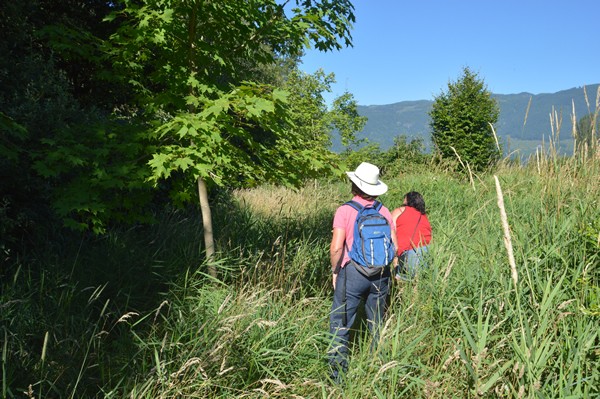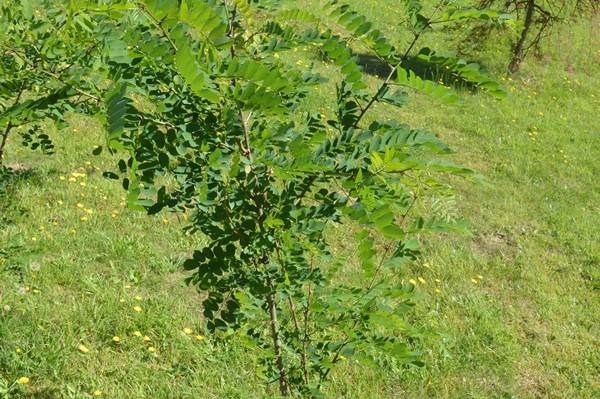Site Description
Name of the site: Lynn Amaral’s Farm
Address: Fraser Valley | Agassiz
Size: 4.8 acres
Type of crops: Various farm animals depending on the year/season (pigs, ducks, sheep) as well as fruit and nut trees, grape vines, raspberries and various vegetables
Number of people employed: No employees
Managed property: 12 years; obtained farm status 4 years ago
It’s like going from an empty field to a maintained landscape. So there’s work involved but I think it’s worth it.
~Lynn Amaral
Stewardship Practices Guides
The following guides are relevant to this project site
- Guidance for Restoration Activities in Riparian Areas
- Riparian Areas in Settled Landscapes
- Drainage Maintenance in Agricultural Waterways
Click to download the table for stewardship practices at the Amaral farm site.
Stewardship project partner:
Fraser Valley Watershed Coalition
Project Overview:
As Lynn was starting her farm 4 years ago, she learned about permaculture. The idea appealed to her and inspired her to include animals within her farming system. She has been learning and adapting over the years to develop an integrated farming system including rotations of pigs, sheep and ducks, as well as fruit trees and vegetables. By engaging in their natural behaviours, the animals are able to do useful work on the farm—sheep graze blackberries, pigs act as roto-tillers and weeders and ducks control pests.
She also takes care to give the animals a nice life with organic feed and ethical practices, allowing them to roam—though they are not allowed in her newly restored riparian area!
Working with the Fraser Valley Watershed Coalition, Lynn expanded and enhanced riparian habitat on her property, creating a potential Oregon Spotted Frog pond. They widened a ditch and pond and planted several hundred native trees, shrubs and grasses in the riparian area. Finally, the team fenced the riparian area off to protect the plantings from Lynn’s sheep.
Key Stewardship Actions
- Plant native vegetation
- Create riparian wetlands
- Protect plantings from wildlife and livestock
Champions
Lynn Amaral is the owner / operator of the farm.
Motivation
Lynn’s main objective was to incorporate organic, sustainable, permaculture where animals and crops were used to improve land quality and farming. Her land was historically a wetland area. She thought it seemed appropriate to create an area for the Oregon Spotted Frog.
A small drainage creek was made slightly wider and a couple hundred native plants, grasses and trees were planted to create a wetland habitat. This linked my drainage pond with the city drainage. I have had some frogs in there and I have had a great blue heron. Also, frequently, it has ducks and other smaller birds.
This project fit with Lynn’s general philosophy of farming as Lynn does not believe that farming and wildlife habitats have to be mutually exclusive.
I think it is possible to have wildlife and farming work together. . . I wanted to see some of land used for frogs and larger mammal accessibility. . . so if a wild animal eats something I farm I accept that; if anything dies a natural death it is left for wildlife.
Challenges
This form of management, using permaculture and maintaining riparian habitat is no easy task, but Lynn feels the rewards make up for the effort.
It’s like going from an empty field to a maintained landscape. So there’s work involved but I think it’s worth it.
One of the most time-consuming maintenance challenges is managing invasive species. Brambles, especially blackberries, take over everything and constant management of her crops is crucial.
If the bramble and the grasses aren’t continually worked on they keep growing back.
As to her general farming philosophy, she sees advantages in poly-culture and permaculture farming from both an environmental and a farm management point of view. But there has nonetheless been lots of learning involved. For example, the sheep ate her first batch of fruit trees.
If bugs or wildlife come and eat one particular crop, I still have a lot of options. I know farmers who were doing monoculture and lost everything to bugs.
Outcomes
Using animals help to control invasive species has worked well for Lynn. For instance, sheep and pigs help to manage the blackberries and reed canary grass, and also fertilize the soil.
The pigs help to root and till the garden areas without machines. I have had ducks to help control slugs and they did eat the slugs and other bugs.
Her riparian habitat enhancements have also paid off. She has seen sets of nesting birds that wouldn’t have been there before the project as well as other small birds. She enjoys the ability to observe wildlife and the environmental and aesthetic outcomes of the project.
From an aesthetic point of view I’m happy with what they’ve done. And I’m in favour of conservation, so from an environmental perspective, I’m happy with what they’ve done in terms of providing a little bit of habitat. And they’ve planted lots of trees on my property which I think is better. I don’t think that anything they have done has taken away from my ability to farm. I think aesthetically it looks nice, the habitat is nice, the extra trees are nice.
She looks forward to seeing the frog habitat develop over the years, as the plants grow. And enjoys showing the area to friends and neighbours as well as other visitors working with the Fraser Valley Watershed Coalition.
I tend to show people the frog habitat. But it’s still fairly new. I think in a few years it will look different. At the moment the plants are new. But I think a lot of people think it’s neat when they see it.
Stewardship Practices Menu
Learn more about Species at Risk
Stewardship Practices Case Studies
Fraser Valley & Lower Mainland Sites
Kootenay Sites
Okanagan Sites
Vancouver Island Sites
Contact Information
Find us on social media
LinkedIn: @StewardshipCentreBC YouTube: @stewardshipcentreforbc1047 Instagram: @StewardshipBC







